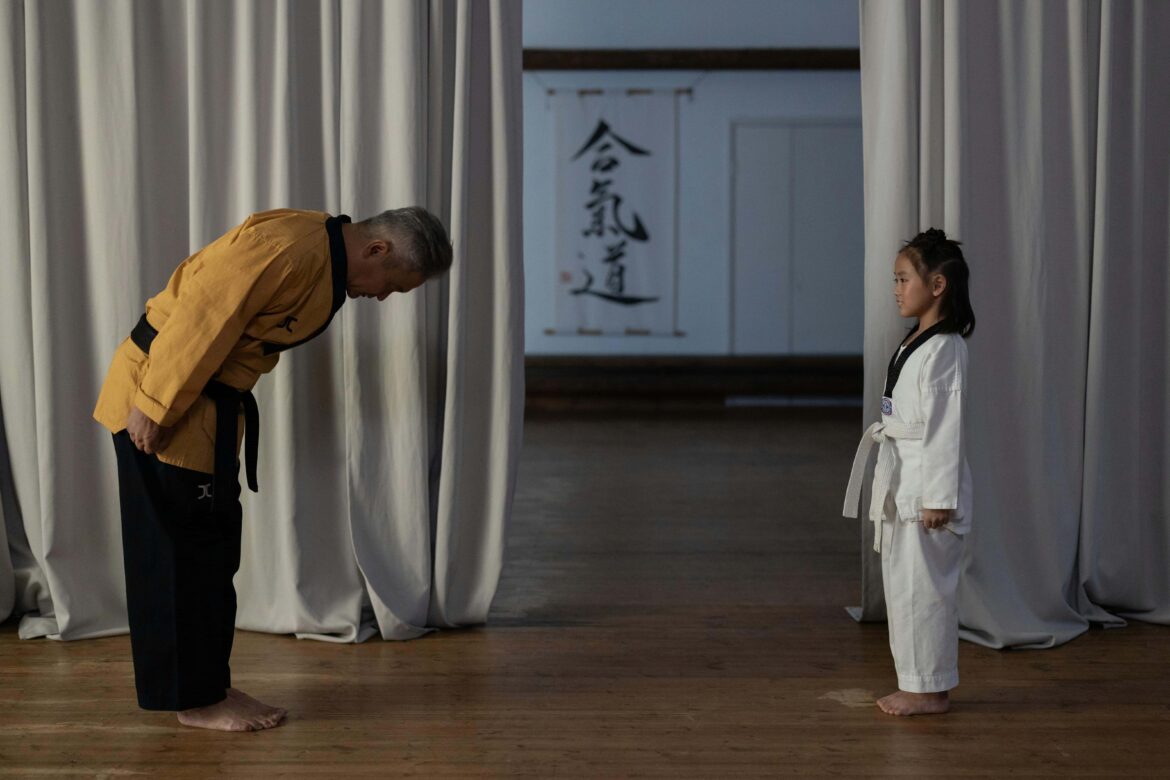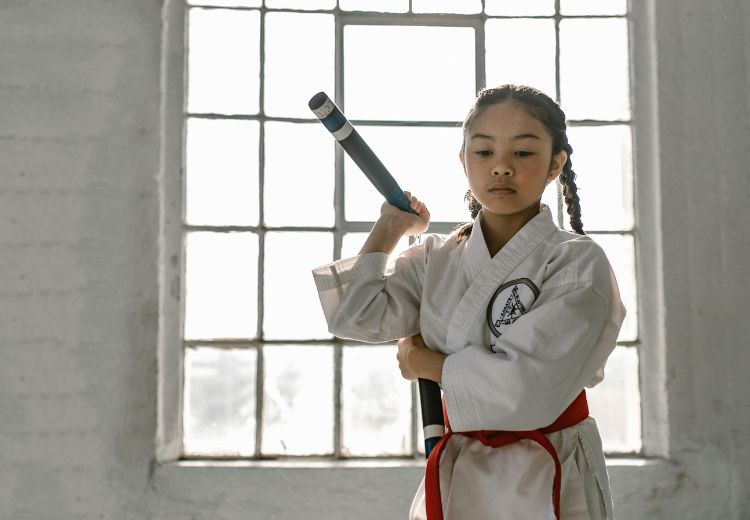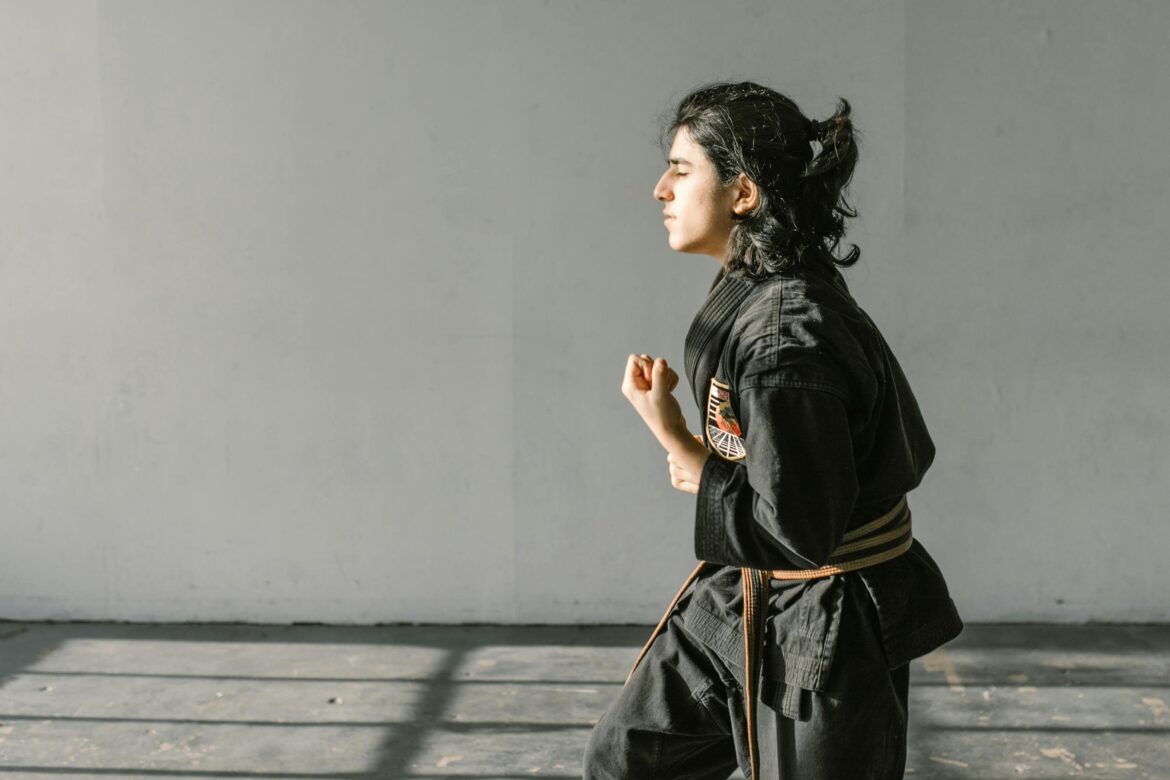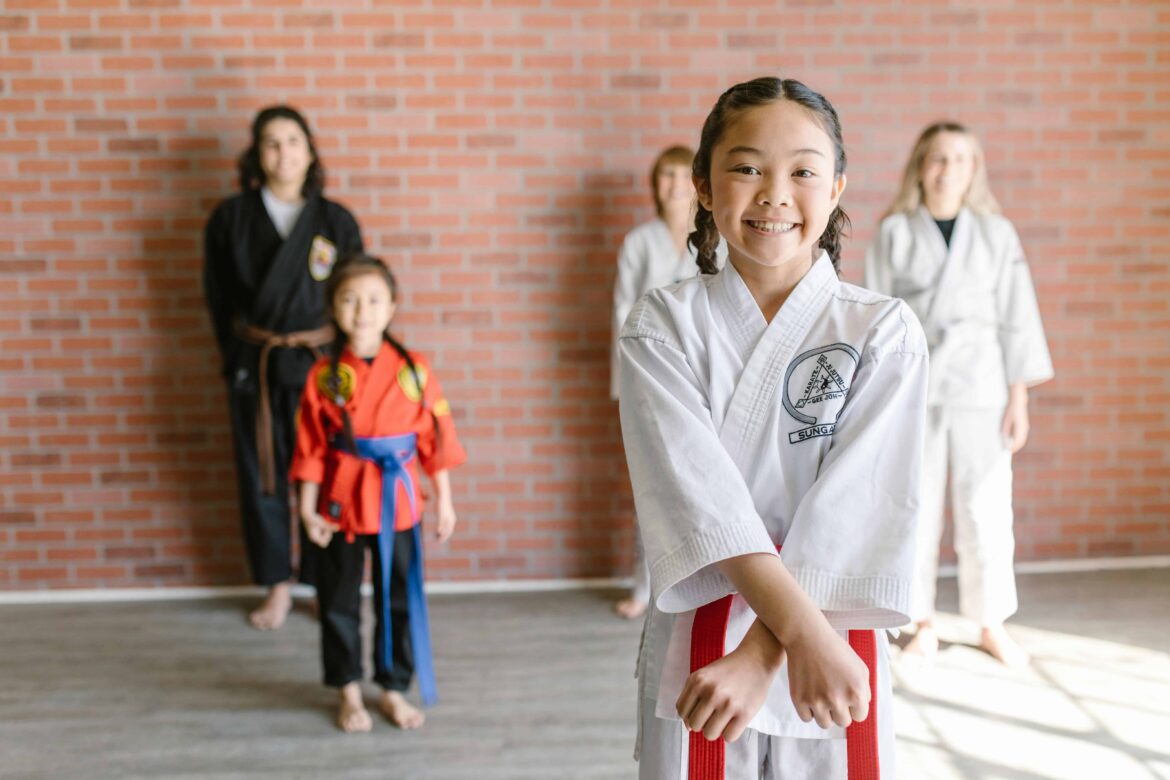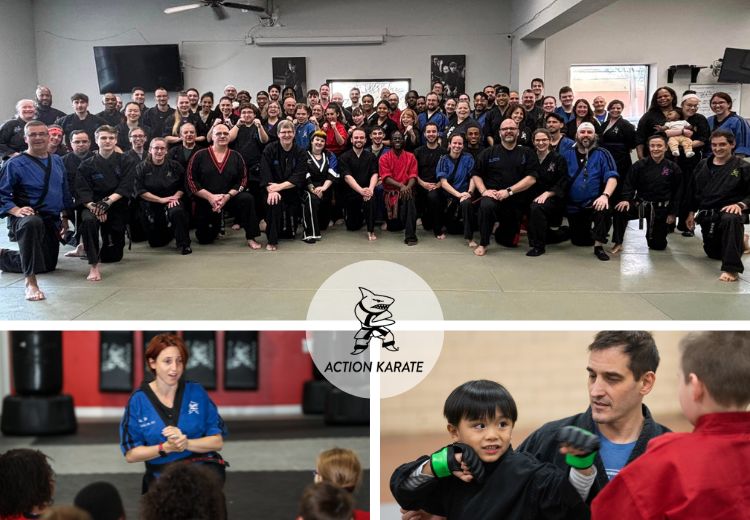At Action Karate, we really commend parents with young children who enroll their child in age-appropriate martial arts classes. Children aged three to six are at an age of learning and exploration and it’s an exciting time for your child’s development.
By equipping your child with strength and confidence in a nurturing setting that prioritizes progress over perfection, karate training can help your child in multiple areas. These include social/emotional, language/communication, cognitive, and physical/movement. And that’s exactly what our trained instructors are here to help with.
We consider every aspect of your child’s development needs and that’s why our classes are structured in such a way as to meet critical and age-appropriate milestones, helping your child thrive in any situation. What is more, our certified instructors are trained afresh each year for monitoring and assessment of your child and their development, while being patient and supportive and creating a positive and inclusive environment. We prioritize safety and growth in a fun and engaging way.
Take a look at just a few of the benefits of karate when put against important age-appropriate milestones.
Developmental Milestones Coupled With the Benefits of Karate by Age 3
By age three, children should be able to perform some key tasks that are suitable for their age. Among these tasks and activities with the added benefits of martial arts include:
- Playing next to and with other children. We introduce teamwork and group work for greater cooperation and social interactions.
- Showcases their abilities to others by raising their hand to answer questions or demonstrating techniques learned with positive reinforcement. We aim not to focus on critique and correction at this stage but rather build confidence and self-esteem.
- Each class has elements of predictability to create expectations and create greater satisfaction when completing a task. An example of this is the routine of clean-up time.
- We encourage imaginative lessons through creative thinking and playing pretend, both in fun and challenging activities and obstacles.
- Our instructors offer guidance and support and give simple two-step instructions to avoid over-complicating or over-correcting students. Gradually, these instructions increase in number but we aim to tailor instructions to the child’s developmental level.
- When it comes to using one’s hands, we encourage children to twist things such as turning door knobs. However, we also encourage the use of gloves for more accurate hand positioning as well as nunchucks for gross motor skills and hand-eye coordination.
- Another area we encourage is jumping off the ground with both feet, with a demonstration and review provided. This move is encouraged in the very first lesson.
- Climbing and running are other activities that we focus on, as a way of developing coordination and better balance.
- An important developmental milestone is kicking. We focus on basic punching and kicking techniques on a variety of targets, once again, strengthening body coordination.
- Walking up and down a flight of stairs is important at this age. This is why during our lessons, some of our expectations are that your child is able to go on and off a target confidently.
Developmental Milestones Coupled With the Benefits of Karate by Age 4
Age four is another important child development milestone where children are expected to perform important tasks and demonstrate certain abilities. We build onto what we have taught at age three to include aspects such as:
- We help your child transition from excessive dependence on you to independence when they take a class with their peers, one drill at a time. Every week, they’re taught a new challenge as they continue to demonstrate self-discipline.
- In order to build confidence, we may sometimes pair your child with an older or more experienced student. This can act as positive reinforcement and social proof.
- Conversations during warm-ups between students and instructors facilitates two-way conversation exchanges. These are usually carried out when the instructor asks leading and open-ended questions.
- Gross motor skills continue to be enhanced with exercises that focus on balancing, kicking, skipping, and jumping.
- Our instructors encourage students to show empathy and they highlight the importance of respect and cooperation with each other.
- In terms of speech, children at age four will be able to demonstrate different moves in front of a class and make themselves heard.
- Safety is a huge priority for us and that’s why our safety lessons focus on evading techniques and other priority safety measures such as wearing a seatbelt or a helmet, stranger danger, and looking both ways when crossing a road.
- With greater independence, children at this age will also be able to start dressing themselves.
- Katas are sequential moves that help children learn pattern recognition, basic counting, and problem solving.
- In terms of language development, we focus on sharing a “lesson of the week”, which incorporates elements of storytelling.
- In addition to all this, students in this age category are taught important values such as respect, discipline, and perseverance.
Developmental Milestones Coupled With the Benefits of Karate by Age 5
With each passing year, your child’s individual abilities develop further and both their muscle tone and attention span start to improve. At age five, we encourage your child to form healthy friendships with their peers while also offering them positive reinforcement. We continue to maintain close supervision and retain an age-appropriate class structure. Here’s what else your child can look forward to during this age.
- We take your child on imaginative adventures, enabling them to pretend to be creative characters, thus strengthening their imagination and also the ability to empathize with others. We include obstacle courses in these sessions as well.
- Students usually seek out the company of their classmates and they receive positive reinforcement when they engage socially.
- Instructors encourage teamwork and taking turns while also being considerate of others.
- We continue to focus on safety as your child learns self-defense with safety-first in mind.
- We facilitate leadership skills when students are chosen to be a leader in small group activities. This is often done when students show that they are doing their best or are helping others.
- Another critical developmental milestone at age five is being able to tailor one’s behavior depending on where the child is. For example, in some cases, it is okay for a child to be loud. Meanwhile, they could be expected to bow on and off the mat to show respect and be quiet when the instructor is speaking.
- Instructions become slightly more complex and the number of moves in a row also increase, as your child uses all four quadrants of their body.
- Memory training and memorization start kicking in as sequences are remembered more easily and children continue to build on their abilities.
- We use foam weapons and large balls in class, with the expectation that children will learn to catch the ball.
- Responsibility is taught when we create expectations for putting things away or moving certain things around based on instructions.
- Students at this age also learn how to tie a knot when they put on their karate belt.
- To earn a patch, students are asked to complete homework.
- We build confidence by asking simple questions with a right and a wrong answer. These questions are asked throughout the class, building on student confidence.
- Katas continue to play an important role as students learn to memorize more sequential moves.
- Emphasis on jumping and kicking, as well as self-defense moves with strong hand-eye coordination continues.
- Our instructors also encourage students to develop language skills through storytelling that is applied to students’ own lives.
Developmental Milestones Coupled With the Benefits of Karate by Age 6
At age six, students are more self-aware and more coordinated, but they still require supervision and guidance. A few of the more important skills and tasks that we encourage them to develop include:
- Patience when taking turns and demonstrating a willingness to work hard to achieve certain goals.
- Students will also be able to display what they have learned through memorization and practice.
- Hopping on one foot and jumping take on new meaning when these activities become more advanced and challenging. In particular, students learn to hop on one foot as well as going around or over different objects in addition to spinning.
- Students’ attention spans start lengthening while instructors switch up and change their teaching style through “disguised repetition”.
- We create small challenges for students to do at home, such as cleaning up or matching socks, in order to earn belts and patches.
- Our instructors continue to encourage language development, however, through the added activities of drawing and writing.
- Counting from one to 10 and sticking to the count without relying on the instructor to do this is another key milestone that is developed.
- We encourage students to be creative and come up with their own ideas and stories.
- Listening followed by reacting is usually done during stretching time when instructors engage in full conversations.
- We understand that it takes time to succeed in anything in life and we encourage resilience and patience while also focusing on goal setting and providing support to help students reach their goals as essential life skills.
Conclusion
Children aged three to six need to be involved in adapting activities that facilitate social engagement. And there’s no better way to achieve this than through the side-by-side instruction and assisted group activities that the highly experienced and certified instructors at Action Karate offer.
Our friendly and welcoming instructors empower children with feelings of competence while also encouraging the formation of healthy friendships and the consideration of rules and customs that every student needs to follow. The results are almost immediately perceptible and we encourage you to contact us to enroll your child to reach those critical developmental milestones while having a lot of fun at the same time.

